Lost And Forgotten Goddess Asherah – Queen Consort Of The Sumerian God Anu And Ugaritic God El
Ellen Lloyd - MessageToEagle.com - Known as Lady of the Sea and mother goddess, Asherah is one of the oldest deities in the Sumerian and Ugaritic pantheon.
Goddess Asherah was worshipped by many ancient civilizations in the Near East.
Was goddess Asherah also the lost bride of Yahweh?
Some biblical scholars believe that Asherah was at one time worshipped as the consort of Yahweh.
Who was the lost goddess of the Hebrews?
Asherah – Chief Goddess Of The Canaanite Pantheon
In Ugaritic mythology, this lost and forgotten deity is referred to as The Lady Asherah of The Sea. Several unearthed ancient clay tablets and writings from Ugarit, which was once an ancient port city in what is today called Ras Shamra, in northern Syria describe goddess Asherah as the wife of chief god El, the West Semitic counterpart of god Anu.
God El was the ruler of heaven and goddess Asherah had the sea as her domain. It is said that she had as many as 70 children and among them were important gods such as Baal, Anath, and Mot. There are also ancient references to one of her servants who was a fisherman named Qadesh was-Amrur. He used to bring her fish and help her saddle her donkey.
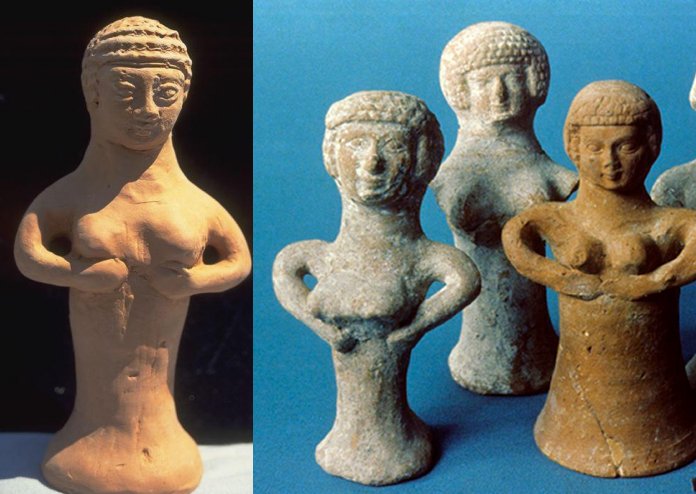
Clay statues of goddess Asherah. Image credit Queen of Heaven - Goddess Asherah
Although goddess Asherah was worshipped in many ancient cities, there is little information about her before the period of Ugaritic myths. Her history is complex and shrouded in mystery.
To the Hittites, this goddess appears as Asherdu(s) or Asertu(s), the consort of Elkunirsa ("El the Creator of Earth") and mother of either 77 or 88 sons.
See also:
Was A Statue Of Asherah Hidden In The Ark Of The Covenant?
Shamash: Mesopotamian God Of Sun, Truth, Justice And Healing
Nanna: Mesopotamian Moon God, Lord Of Wisdom And Father Of The Gods
Mysterious Scorpion Goddess In Myths And Legends
In one Sumerian inscription set up in honor of Hammurabi, King of Babylon, about 1763 B.C., she is mentioned as Ashratum, the bride of Anu. Since the Sumerian and Akkadian god Anu most likely corresponds to the Canaanite god El, historians think that goddess Asherah held the position of the chief or mother goddess for at least three centuries prior to the Ugaritic period.
In the Amarna letters, also known as Amarna Tablets as well as in the Bible the names of Asherah and Astarte interchange which creates confusion among scholars.
Among the Amarna letters, a King of the Amorites is named Abdi-Ashirta, "Servant of Asherah". Ashtart is believed to be linked to the Mesopotamian goddess Ishtar who is sometimes portrayed as the daughter of Anu while in Ugaritic myth, Ashtart is one of the daughters of El, the West Semitic counterpart of Anu.
Goddess Asherah And The Biblical Connection
Raphael Patai writes in his book The Hebrew Goddess that it is almost inevitable that the cult of the great Canaanite mother-goddess should penetrate the Hebrew religion as well. “While it is not easy to reach a definite conclusion as to the physical shape in which Asherah was represented among the Hebrews, a careful perusal of Biblical references to the “Asherahs” seems to indicate that they carved wooden images which were set up by implanting their base into the ground. In early times they often stood next to altars dedicated to Baal, later a “statue of Asherah” was set up in the Jerusalem Temple itself. The word Asherah in Biblical usage can refer to either to the goddess herself or to her image.”
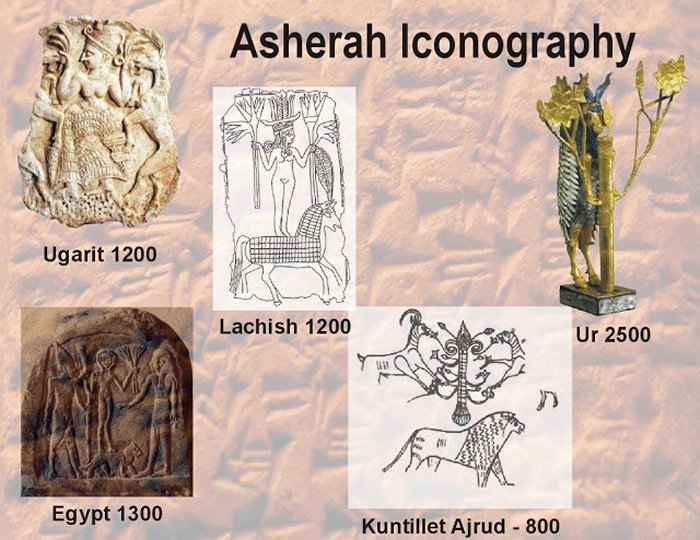
Image credit: Andrew Stehlik
In his book, Did God Have A Wife?, author William G. Dever demonstrates that a cult of Asherah did flourish in ancient Israel. According to Dever, “some of the biblical references to "asherah" are downplayed in the texts, reducing her as it were to only a "shadow of herself" — merely a symbol of the goddess, a pole or tree.”
What Was The Asherah Pole?
The word Asherah is translated in Greek as also, grove, or occasionally by dendra, trees. Asherah poles, which were sacred trees or poles, are mentioned many times in the Hebrew Bible. Asherah poles were also known in Scripture as the "high places." This is likely due to the connection of worship upon hilltops and mountains.
The first mention of the Asherah pole is in Exodus 34:13 (NIV): "Break down their altars, smash their sacred stones and cut down their Asherah poles."
The Israelites were commanded to destroy any Asherah pole they found among the other people in the land.
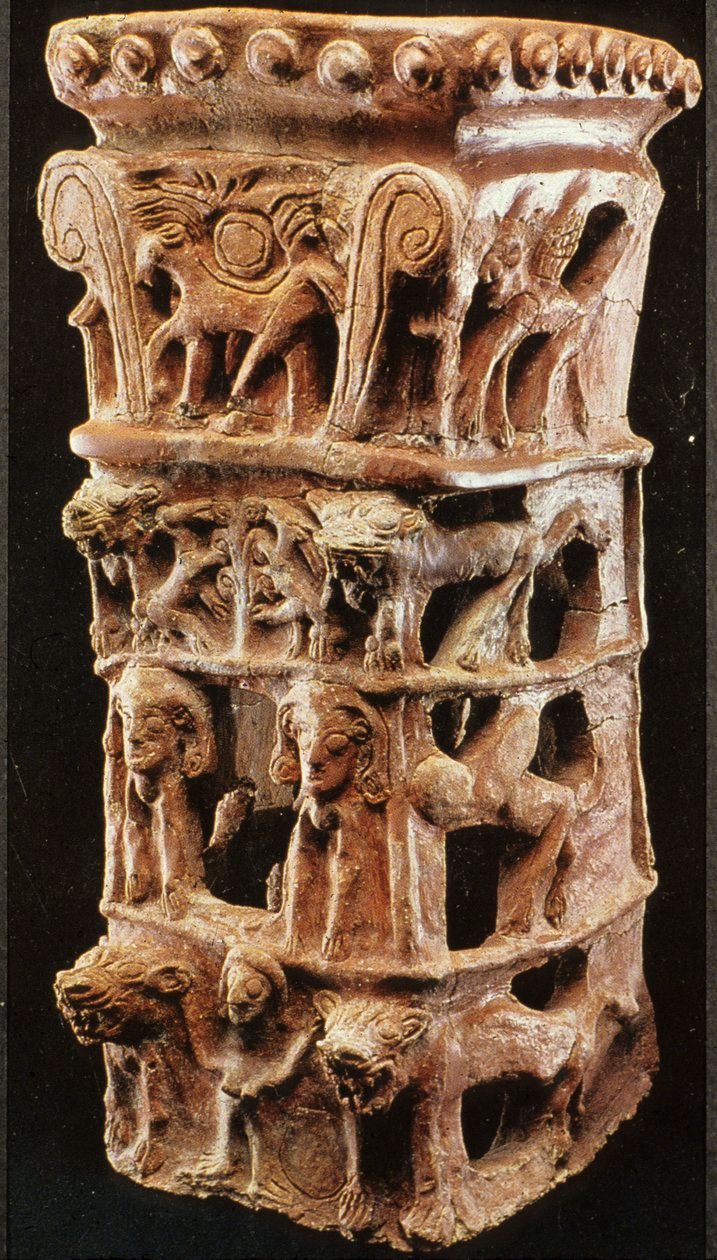
This four-tiered cult stand found at Tanaach is thought to represent Yahweh and Asherah, with each deity being depicted on alternating tiers. Photo: © The Israel Museum, Jerusalem/Israel Antiquities Authority (photograph by Avraham Hay).
In Deuteronomy 16:21, the Lord commanded the people of Israel to not make Asherah poles of their own. However, it did not take long for the Israelites to disobey this command. In Judges 3:7, we read, "And the people of Israel did what was evil in the sight of the LORD. They forgot the LORD their God and served the Baals and the Asheroth." Instead of obeying God's commands, they worshiped the gods of the people God sent them to drive out.
It is believed that many Asherah poles were raised in honor of the mother-goddess Asherah. The purpose of the objects remains a subject of heated debate among scholars.
The whole subject becomes even more complicated due to the discovery of ancient inscriptions unearthed at Kuntillet ‘Ajrud. The inscriptions are religious in nature, invoking Yahweh, El, and Baal. What created an intense debate are the inscriptions that include the phrases "Yahweh of Samaria and his Asherah" and "Yahweh of Teman and his Asherah.
Who or what was Asherah? The answer to this question depends on scholars’ interpretation of Asherah in relation to Yahweh.
Written by Ellen Lloyd – AncientPages.com
Copyright © AncientPages.com All rights reserved. This material may not be published, broadcast, rewritten or redistributed in whole or part without the express written permission of AncientPages.com
Expand for referencesMore From Ancient Pages
-
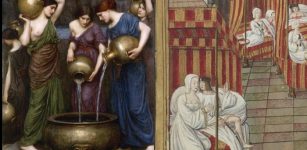 Mythical Danaides: Daughters Of Danaus Condemned In Hades To Eternal Punishment
Featured Stories | Mar 22, 2016
Mythical Danaides: Daughters Of Danaus Condemned In Hades To Eternal Punishment
Featured Stories | Mar 22, 2016 -
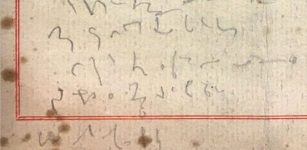 Who Can Solve The Shackleton Scribble Mystery?
Artifacts | Sep 13, 2017
Who Can Solve The Shackleton Scribble Mystery?
Artifacts | Sep 13, 2017 -
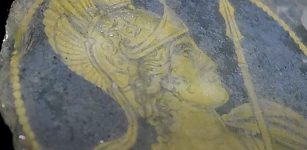 Extremely Rare Ancient Gold Glass With Goddess Roma Found During Subway Works In Rome
Archaeology | Feb 13, 2023
Extremely Rare Ancient Gold Glass With Goddess Roma Found During Subway Works In Rome
Archaeology | Feb 13, 2023 -
 Hippocrates Didn’t Write The Oath, So Why Is He The Father Of Medicine?
Featured Stories | Oct 7, 2015
Hippocrates Didn’t Write The Oath, So Why Is He The Father Of Medicine?
Featured Stories | Oct 7, 2015 -
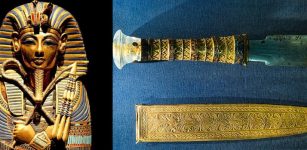 Tutankhamun Had An Ancient Dagger From Outer Space
Archaeology | Jun 1, 2016
Tutankhamun Had An Ancient Dagger From Outer Space
Archaeology | Jun 1, 2016 -
 British Museum Is World’s Largest Receiver Of Stolen Goods – Says QC
Archaeology | Nov 12, 2019
British Museum Is World’s Largest Receiver Of Stolen Goods – Says QC
Archaeology | Nov 12, 2019 -
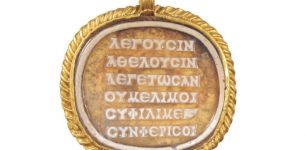 Almost Unknown Ancient Greek Text Rewrites History Of Poetry And Song
Archaeology | Sep 9, 2021
Almost Unknown Ancient Greek Text Rewrites History Of Poetry And Song
Archaeology | Sep 9, 2021 -
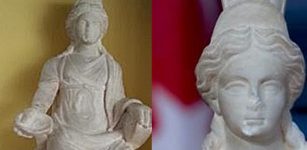 Statue Of Goddess Cybele Looted In The 1960s Returned To Turkey
Artifacts | Dec 22, 2020
Statue Of Goddess Cybele Looted In The 1960s Returned To Turkey
Artifacts | Dec 22, 2020 -
 Death Of Norse God Balder And Loki’s Mischief That Led To Destruction In Ragnarok
Featured Stories | Nov 15, 2016
Death Of Norse God Balder And Loki’s Mischief That Led To Destruction In Ragnarok
Featured Stories | Nov 15, 2016 -
 Mysterious Standing Deer Stones Of Mongolia -Their Purpose And Creators Remain Unknown
Ancient Mysteries | Jun 18, 2014
Mysterious Standing Deer Stones Of Mongolia -Their Purpose And Creators Remain Unknown
Ancient Mysteries | Jun 18, 2014 -
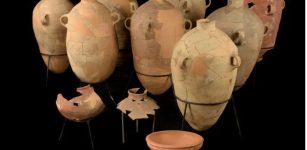 Jars With 2,600-Year-Old Vanilla Remnants Discovered In The City Of David
Archaeology | Mar 31, 2022
Jars With 2,600-Year-Old Vanilla Remnants Discovered In The City Of David
Archaeology | Mar 31, 2022 -
 On This Day In History: First Experimental Hydrogen-Filled Balloon Reaches A 900m Altitude – On August 27, 1783
News | Aug 27, 2016
On This Day In History: First Experimental Hydrogen-Filled Balloon Reaches A 900m Altitude – On August 27, 1783
News | Aug 27, 2016 -
 ‘The Battle Of The Tooth Worm’ – Strange Ivory Carving
Artifacts | Aug 11, 2015
‘The Battle Of The Tooth Worm’ – Strange Ivory Carving
Artifacts | Aug 11, 2015 -
 Native Americans’ Visions Of Distant Explorers May Unravel Some Ancient Mysteries Of North America – The Arrival – Part 1
Ancient Mysteries | Nov 19, 2019
Native Americans’ Visions Of Distant Explorers May Unravel Some Ancient Mysteries Of North America – The Arrival – Part 1
Ancient Mysteries | Nov 19, 2019 -
 Underground Man-Made Longyou Grottoes Remain An Ancient Unsolved Mystery
Ancient Technology | Jan 16, 2019
Underground Man-Made Longyou Grottoes Remain An Ancient Unsolved Mystery
Ancient Technology | Jan 16, 2019 -
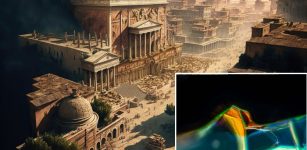 Buried Ancient Roman Glass Has Formed Photonic Crystals – Extraordinary Discovery – Scientists Say
Ancient Technology | Sep 25, 2023
Buried Ancient Roman Glass Has Formed Photonic Crystals – Extraordinary Discovery – Scientists Say
Ancient Technology | Sep 25, 2023 -
 Legend Of Gyanganj – Antediluvian City Of Immortal Sages That Can Only Be Found By The Chosen Ones
Featured Stories | Jul 29, 2017
Legend Of Gyanganj – Antediluvian City Of Immortal Sages That Can Only Be Found By The Chosen Ones
Featured Stories | Jul 29, 2017 -
 Richard The Lionheart: Famous Leader, Warrior And Military Mastermind But Not The Best English King
Featured Stories | May 29, 2017
Richard The Lionheart: Famous Leader, Warrior And Military Mastermind But Not The Best English King
Featured Stories | May 29, 2017 -
 Temple Dedicated To Goddess Nemesis Discovered Under Ancient Theater In Greece
Archaeology | May 20, 2019
Temple Dedicated To Goddess Nemesis Discovered Under Ancient Theater In Greece
Archaeology | May 20, 2019 -
 Gunung Padang – Remarkable Megalithic Site In Indonesia
Civilizations | Jun 14, 2014
Gunung Padang – Remarkable Megalithic Site In Indonesia
Civilizations | Jun 14, 2014

